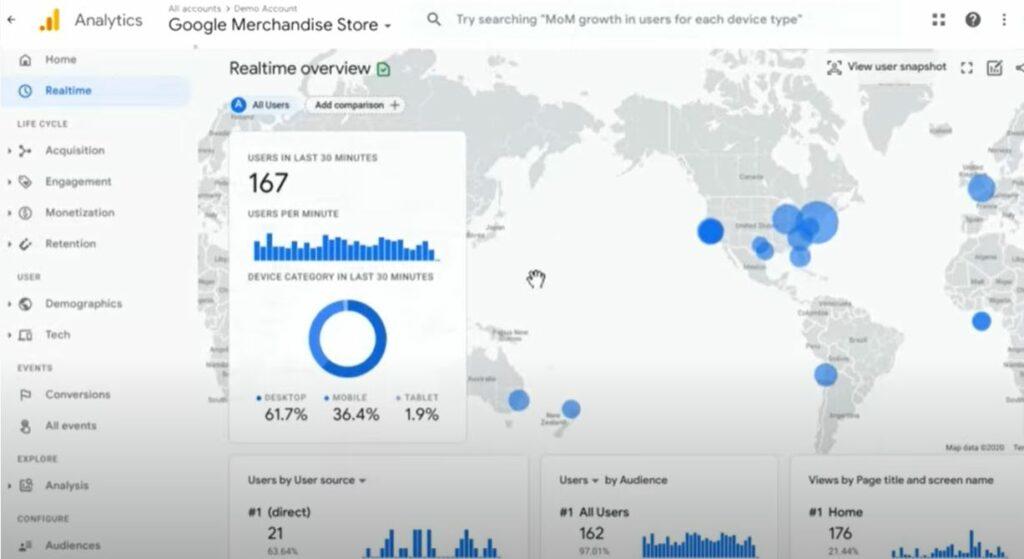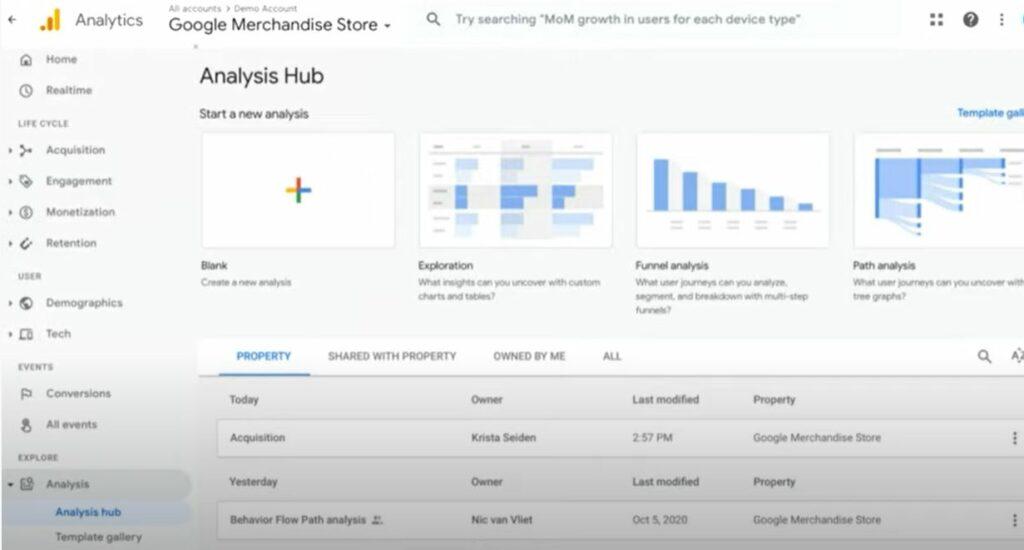In October, Google announced the release of a major update that promises to benefit both marketers and business owners alike. That update was Google Analytics 4.
With more commerce moving online and businesses under increased pressure, insights into what drives sales from digital analytics tools have become even more critical. A development that has been in the making for some time, the new version of Google Analytics is said to enhance the measurement of user engagement and behaviour across multiple devices and channels, all the while ensuring user privacy at a granular level.

This privacy-centric design is an essential feature of the new Google Analytics so that as a business you can rely on Analytics to give you a complete understanding of your customers; even as industry changes like restrictions on cookies and identifiers create gaps in your data. A tool that makes sure you are always ready for what is next.
How do I create a Google Analytics 4 account?
The new Google Analytics is now the default experience for all new properties and it is where Google will be investing in for future improvements. For those who already have a Google Analytics account, Google has suggested that marketers create a new Google Analytics 4 property alongside existing properties so that no existing data is lost.
For those updating their existing GA account, data collection will use your current gtag.js tagging and connected site tags to collect data for your GA4 property. All of your page URLs will need to be tagged with gtag.js for this to work. Google will also pull settings from your Universal Analytics property so that you can have a similar view in the GA4 update, contributing to an easy set-up.
What are the new key marketing features of Google Analytics 4?
Firebase Analytics – combined website & app data, plus advanced ‘real-time’ user measurements
The introduction of Firebase Analytics will leverage the event-driven data model to better describe user behaviour, measure user engagement and combine data across both websites and mobile applications.
Previously customers who have both web and mobile app experiences have often found the legacy versions of Google Analytics to fall short. Firebase Analytics solves this problem from the backend. By collecting all data using the same schema, regardless of whether it came from a website or mobile application, brands who interact with customers across multiple devices can finally analyse cross-device behaviour, and marketers can track campaign performance across multiple devices as well.
This ability to monitor users over multiple devices will be one of the biggest wins for marketers from the new Analytics update, as now a business can understand how customers interact with their brand as a whole and even see app and web data side-by-side in the same reports.
Tagging & Event Tracking – enhanced measurement of user activity in real-time!
The addition of global site tag will allow you to enable features that require code changes to the website without modifying tags. Legacy versions of Google Analytics had required a heavy amount of custom tagging, with some customers leaving in favour of solutions that captured a high volume of interactions without the extra task of configurations.
The Google Analytics 4 update addressed this issue by building on the global site tag functionality with a feature called ‘Enhanced Measurement‘. This feature enables marketers to flip on common forms of tracking from the user interface without any tag updates.

Working in conjunction with enhanced measurement, the addition of codeless event tracking will also assist with measuring user activity. Expanded codeless features will make it easier for marketers to track and measure on-site and in-app actions in real-time, such as page scroll or video play, without the need to add code or set up event tracking in Google Tag Manager.
AI Powered Insights – alerting marketers to online demands and data trends
The machine learning powered insights in Analytics has since been replaced with a new insight feature that can automatically alert marketers to data trends such as surging demand for a product they sell. This also predicts outcomes, such as churn rates and the potential revenue a business could earn from a particular segment of customers.
These insights can help marketers anticipate actions their customers take in the future and focus on higher-value audiences.
More Granular Data Controls – helps marketers comply with current GDPR and CCPA
With the measurement of user activity now more advanced, it is important for Google to ensure sufficient data retention controls are implemented where needed.
Designed to help you respond to rising consumer expectations, regulatory developments and changing technology standards for user privacy, GA4’s more granular data controls allow sites that have to obtain end-user consent to collect thorough data analytics.
Data deletion capabilities are also improved, enabling businesses to comply with deletion requests from users without having to remove more data than necessary. These features will also include a preview mode for businesses to verify the data they’re about to remove.
The Analysis Hub Reports – access to what was previously only available to GA360 users!
The ‘Analysis Hub’ reports that were previously only available to GA360 users are now available for free, and they’ve been greatly enhanced so that you can easily explore data, analyse individual users, create custom conversion funnels, compare segments and conduct pathing analysis.

Lessen User Ambiguity – a benefit for target audience advertising
The update on Google signals will use Google’s identity software to recognise users who are not logged in. This will be available via the proprietary Google signals graph to solve the ambiguity around user-leave, in a way that wasn’t possible before.
Integration of the new Firebase Analytics and Google Ads campaigns will also help identify users in a way that benefits identifying the right target audience for advertising. Marketers can now build and maintain audiences from their visitors across web and app, by monitoring how that one individual user interacts over both devices. For example, if a user qualified to be on an audience list due to an action taken on the web and were taken off the list because they complete a purchase on the app, the list would then automatically update to remove the user so that they’re not retargeted with ads.
Now you know the changes, should you make the switch to the new Google Analytics 4?
As mentioned earlier, the advice up to this point has been to consider running the new property type in parallel with your existing tracking, but the change isn’t necessarily for everyone.
Whilst the main positive difference of GA4 is the event-driven data model that collects a more in-depth report of user behaviour, the new version of analytics falls slightly short in its eCommerce and conversion tracking features, with the new features being far from straightforward. Moving from what was recognised as ‘Goals’ with the older version of GA, the newer ‘conversions’ feature in GA4 lacks many options of predefined conversion settings, so a lot is down to the user to configure manually.
Despite the pros and cons of both versions, Google is making it clear where their focus is, with recent releases almost solely focused on the GA4 roadmap. Moving forward, taking advantage of the GA4 release and making a new GA4 property alongside your existing properties, will ease you into managing the new features and will help you and your business get ahead of the curve when it comes to making use of the powerful analytical and analysis opportunities.
If you need a helping hand with monitoring your website through Google Analytics or wish to invest in digital marketing for the future, read more about our outsourced digital marketing services or simply get in touch and a member of the team will be more than happy to help.








